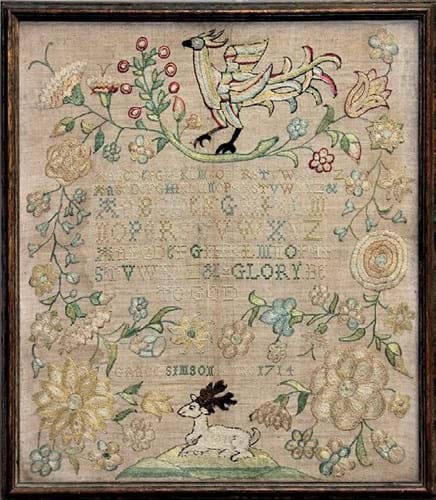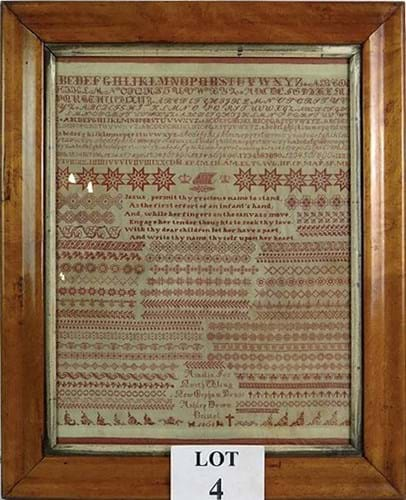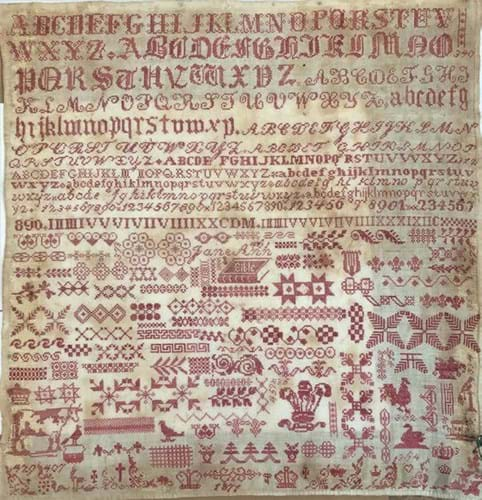Key to its appeal is the relatively early date – Grace Simpson, 1714 – the period when the typical format of the English sampler evolved from the band sampler, typically filled with rows of repeating patterns worked in coloured silks, to the squarer shape worked with words and pictorial motifs.
The result was something that could be displayed on the wall in the style of a painting or a print, rather than kept rolled up as a long, narrow reference piece.
This 14 x 12½in (36 x 32cm) example at the auction on April 23 was worked with central alphabets and Glory be to God within a scrolling border of decorative flowers. The fanciful ho-ho bird above and the white hart below were particularly charming features.
Produced by orphans
Nineteenth century orphanage samplers represent a different collecting subset. Sentiment is just as important as needlecraft.
The New Orphan Houses in the Ashley Down district in the north of Bristol were once the largest orphanage in the UK. Built between 1849-70 by the Prussian evangelist George Müller (1805-98), the five houses held 2050 children at any one time. Some 17,000 passed through the doors before the buildings were sold to Bristol City Council in 1958.
Skill with a needle was a key part of an education that also included scripture, arithmetic, grammar, history, geography, Swedish drill and singing.
The fabric samplers stitched by the girls closely followed a set pattern: all have shared alphabets, motifs, and are worked in red thread on cream linen. Kept as keepsakes, they were also useful when showing potential employers their abilities.
This example offered at Bentley’s (19% buyer’s premium) in Cranbrook, Kent, on May 1 with a modest guide of £140-160 was one of the finest of its kind. Measuring 21½ x 17in (55 x 44cm), it was sewn by Amelia Fox of New Orphan House, Ashley Down, Bristol, and dated 1868.
Her considerable skill with a needle and thread earned a hammer price of £5500 – among the highest ever paid for a Bristol orphanage sampler. Other examples sold in recent years have achieved prices between £1000-3400.
By ‘Jane Ann’
Another Bristol orphanage sampler measuring 10½ x 11in (26 x 27cm) was offered by Tennants (17.5% buyer’s premium) just a few days later on May 7.
Probably made at Ashley Down, it was worked by a ‘Jane Ann’ and is dated 1871. Intriguingly, she has added three-digit numbers into the sampler fitted among the numerous details, which could be bed numbers of her fellow orphans - or acknowledging the other girls who helped with her sampler.
Estimated at £300-500, it sold at £6000.

















